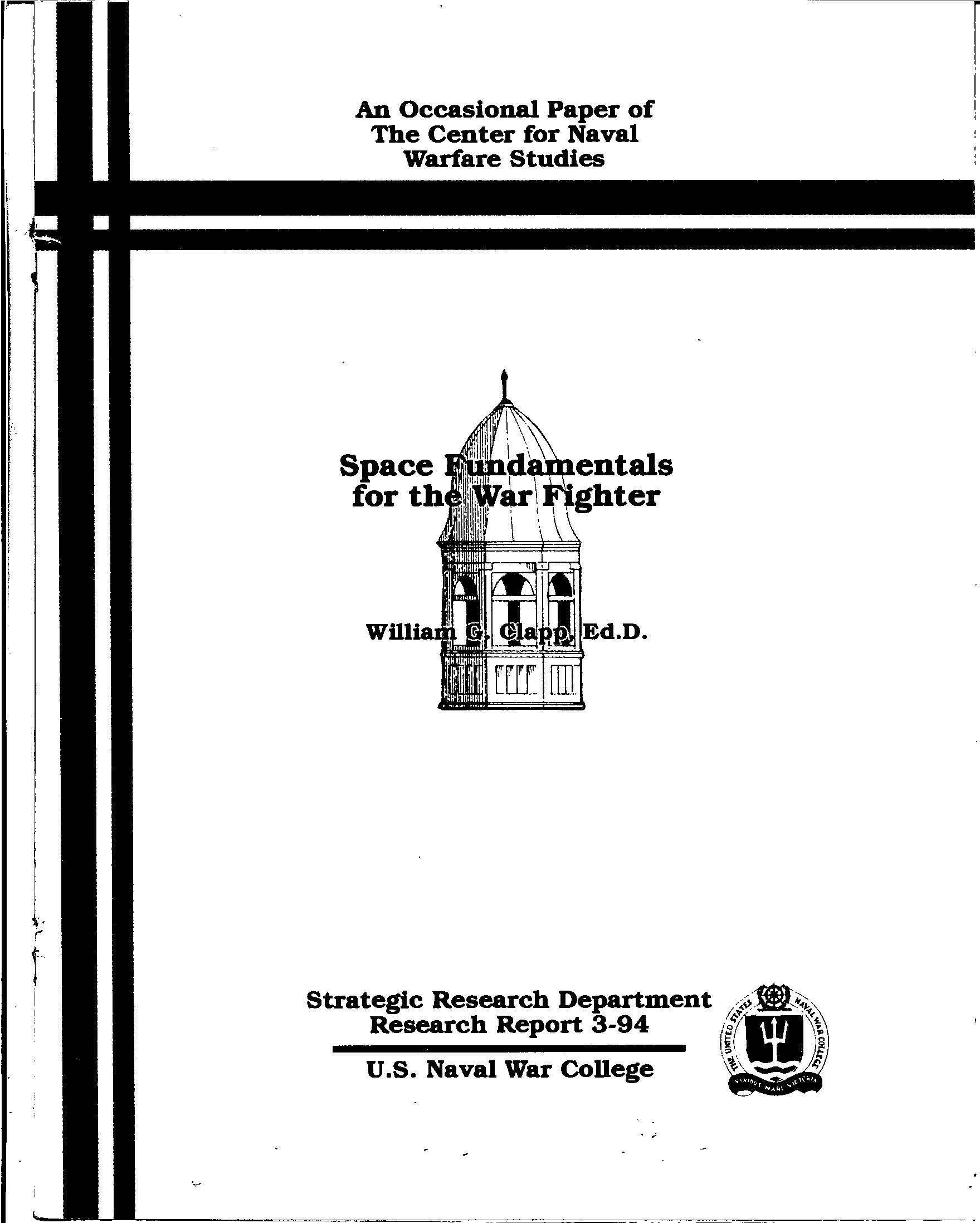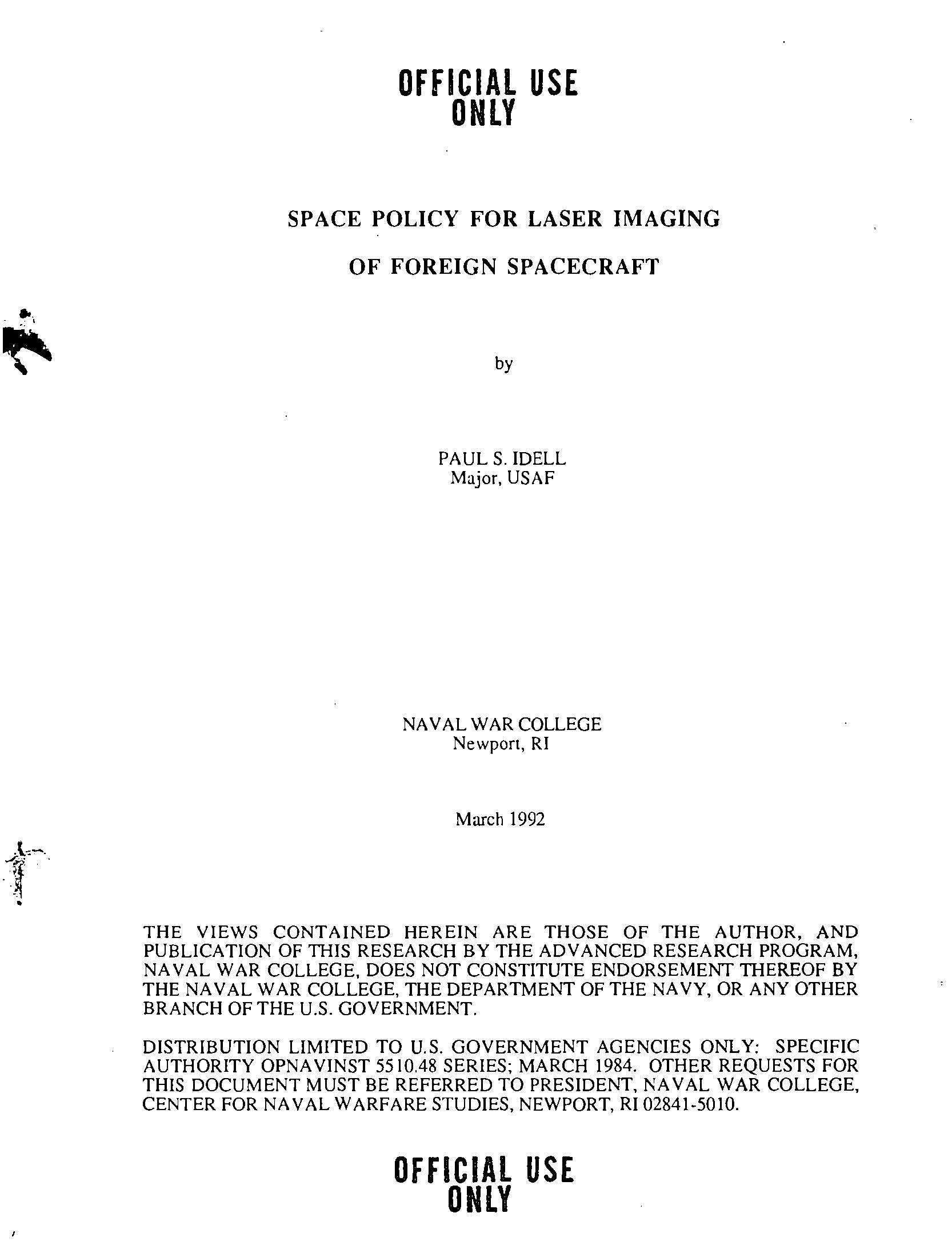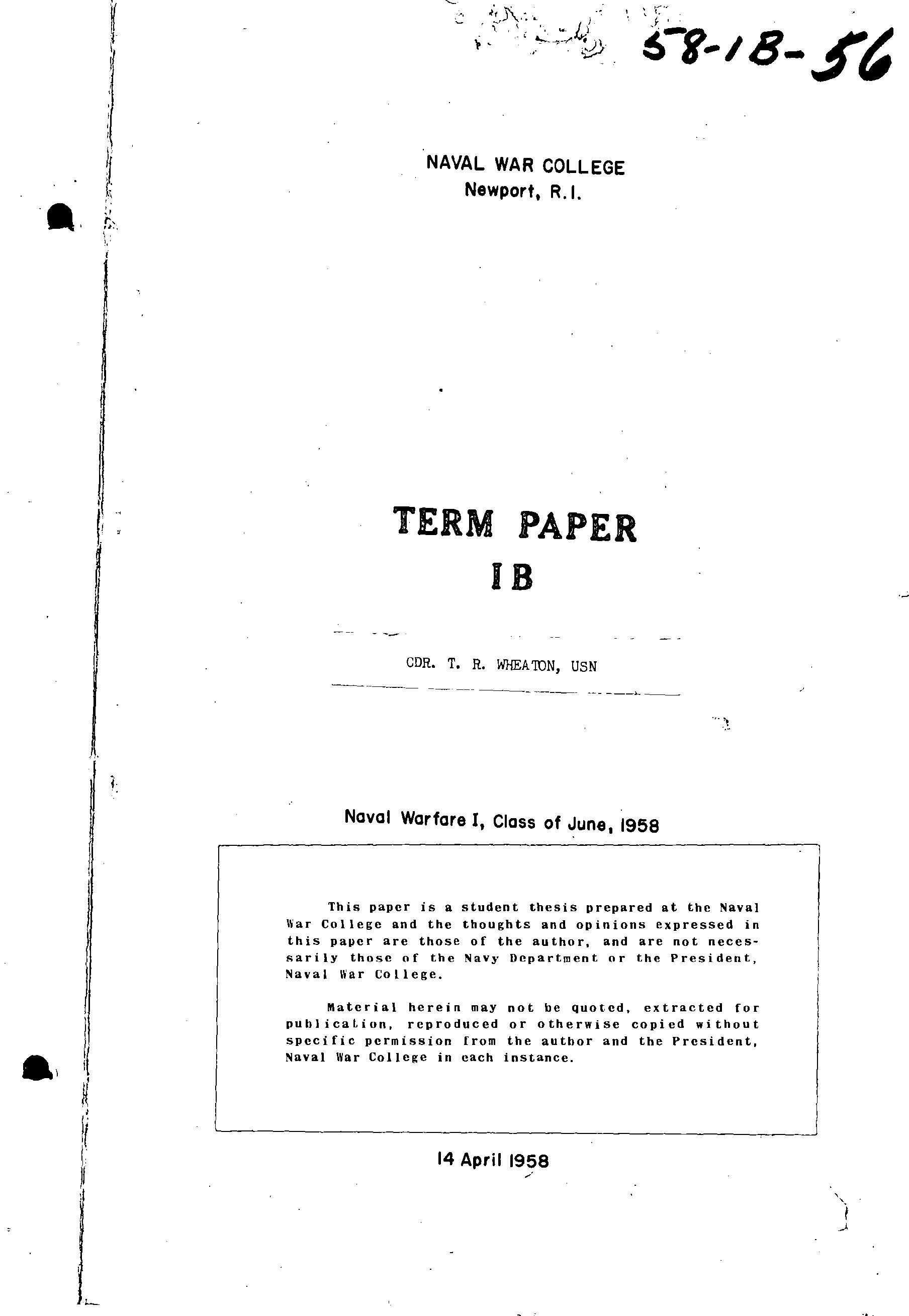Showing Records: 11 - 20 of 23
Space Fundamentals for the War Fighter, 1994 May 31
A paper submitted to the faculty of the Naval War College in partial satisfaction of the requirement of the Department of Operations by William G. Clapp, Ed.D, Major, Utah National Guard that was later updated for publication as a Strategic Research Department occasional paper because of the timeliness of the topic and the belief that it deserved wider circulation.
In this paper, Clapp provided an overview of the space environment and its assets in order to understand their capabilities. Clapp argued that space assets are vital elements that influence both peacetime and wartime missions at all three levels of military activity: strategic, operational, and tactical. This paper provided insights concerning a few of the limitations and capabilities of U.S. space assets and should help the war fighter understand the environment in which the battle for aerospace superiority must be fought and won.

Space Fundamentals for the War Fighter, by William G. Clapp
"Space Fundamentals for the War Fighter" by William G. Clapp, Ed.D., 1994 May 31
Compilations of articles, portions of books and government documents used in Strategy, National Security Decision Making, and Operations Department Curriculum.
Space Policy For Laser Imaging of Foreign Spacecraft, 1992 Mar 13

Space Policy For Laser Imaging of Foreign Spacecraft, by Paul S. Idell
Stephens, James C.: Aerospaceplane : versatile cold war weapon, 1964

Strategic Significance of Space Satellites, by Thomas R. Wheaton
The Application Of Submarine Experience And Technology To The Space Environment, 1992 Mar 6
Student research paper by CDR Stephen M. Jarrett, USN in satisfaction of the requirements for the Advanced Research Program elective. In this paper, Jarrett explained how the utilization of submarine knowledge of personal adaptation, atmospheric rejuvenation, casualty control, and nuclear technology and experience can greatly aid the space program in its advance into the frontiers of space.
Also found within this folder are Jarrett's initial application to the Advanced Research Program, research prospectus, a memorandum detailing his research trip to Washington, D.C., and a report documentation page.
The U.S. Commercial Space Launch Program and the Department of Defense Dilemma, 1994 Aug 18
A longer version of this paper was originally submitted to the faculty of the Naval War College in partial satisfaction of the requirements for an Advanced Research Program elective William G. Clapp, Ed.D, Major, Utah National Guard that was later updated for publication as a Strategic Research Department occasional paper. In this paper, Clapp described how the U.S. space launch program no longer dominated the world and was instead playing catch-up with the world's first commercial launch company, Arianespace. He suggested that a healthy U.S. space launch program could provide considerable economic advantages and is essential to assure continued low-cost military access to space, but that the space policy in the 1990s prohibited development of new launch vehicles and limited the Department of Defense to only upgrades of existing launch vehicles as well as a declining DoD budget. He also identified Arianespace's advantages and offered low-cost recommendations for countering them that would help the U.S. once again dominate the world commercial launch market and ensure affordable military access to space.
Unpublished writings on U.S. military, naval warfare and space exploration subjects, 1966 - 1969
Writings, addresses, letters, etc., relating to the United States military, naval air power, modern warfare and space exploration. Hartford, Connecticut, 1966–1970.
